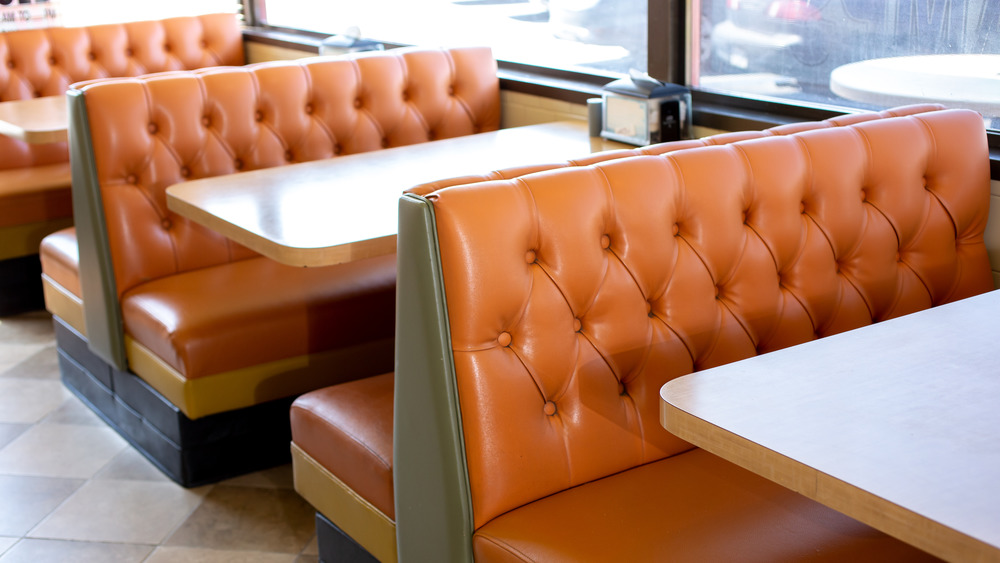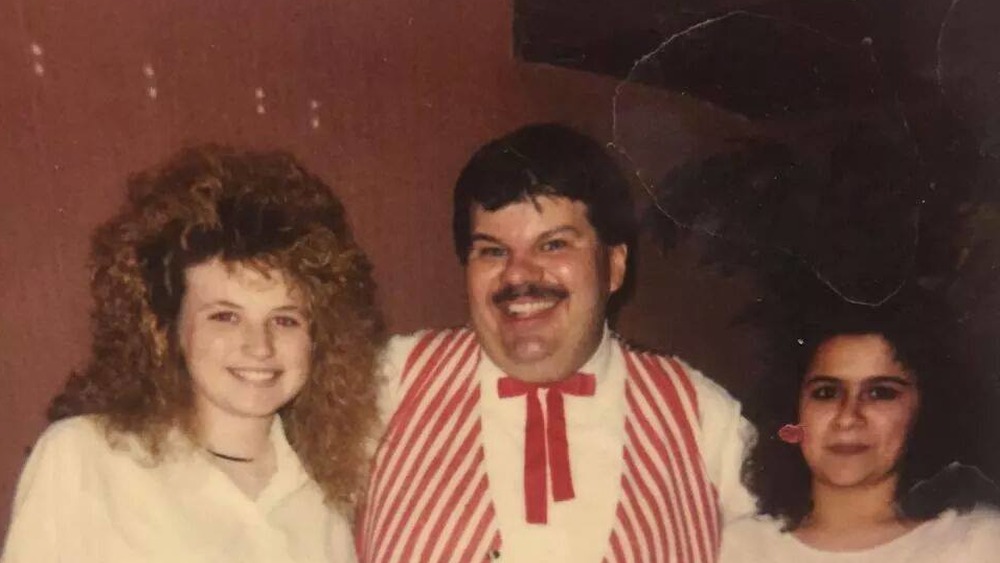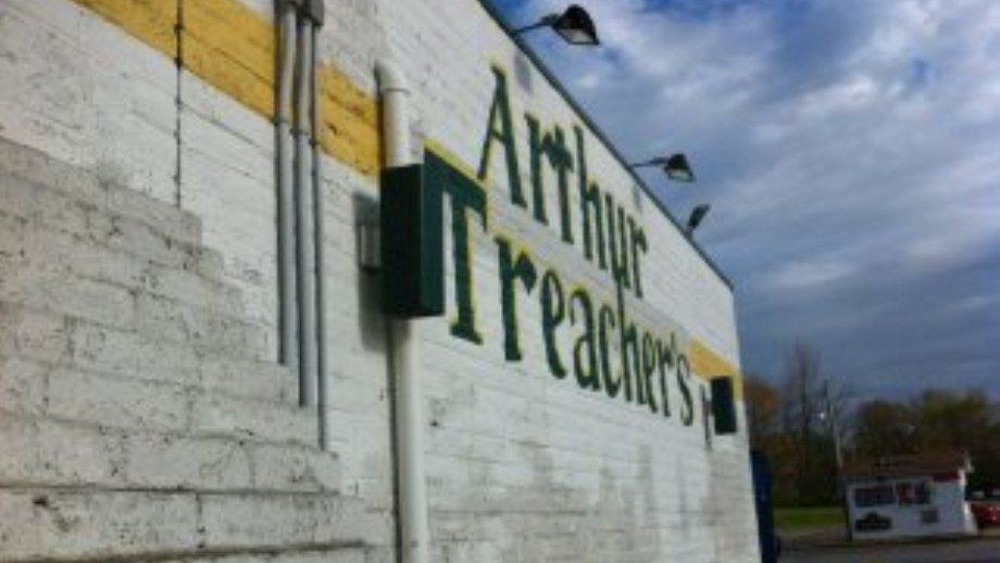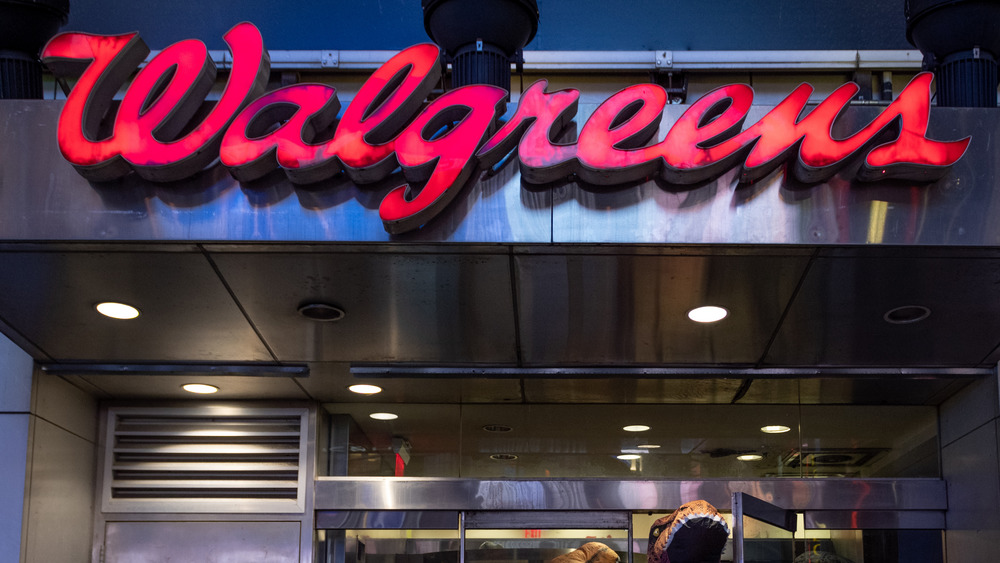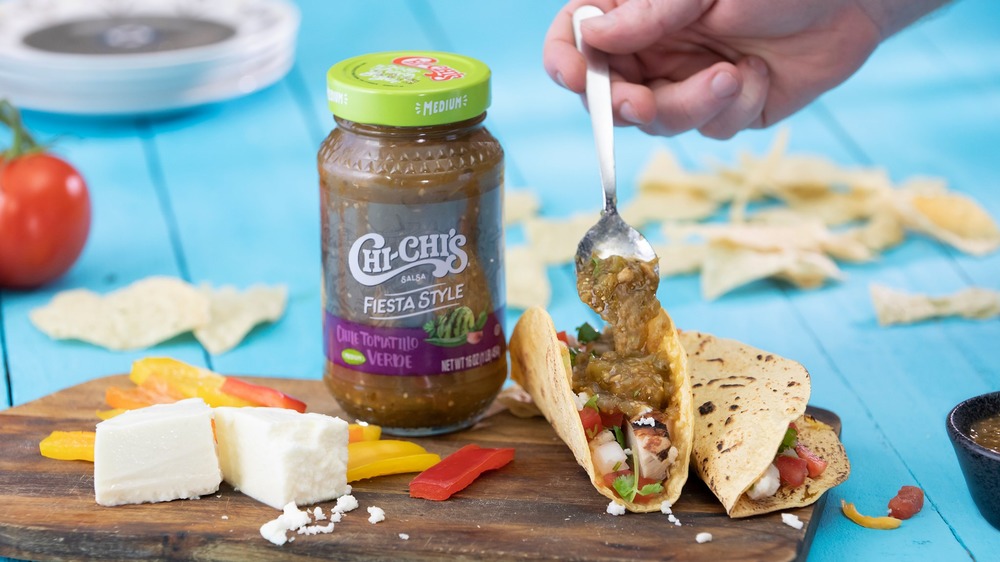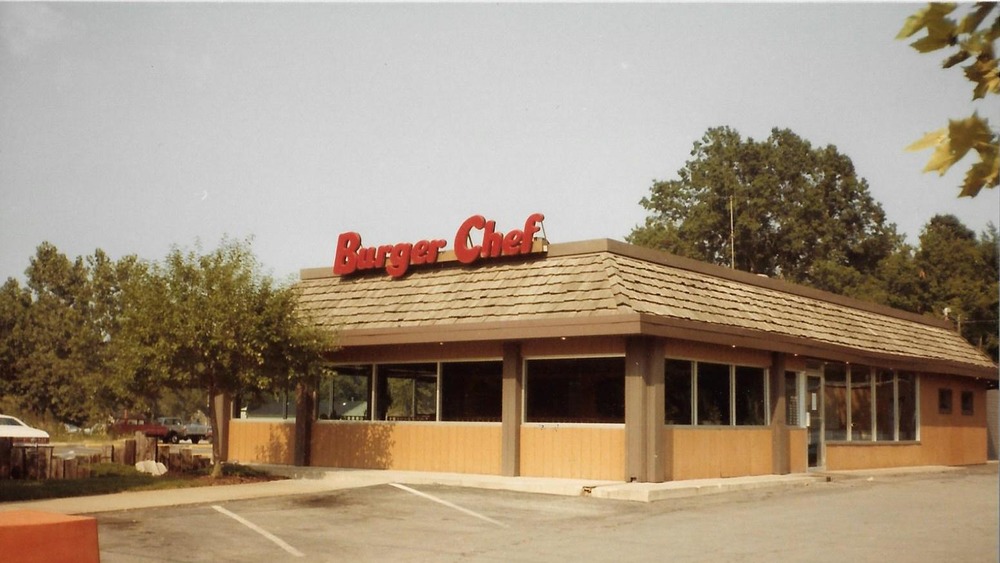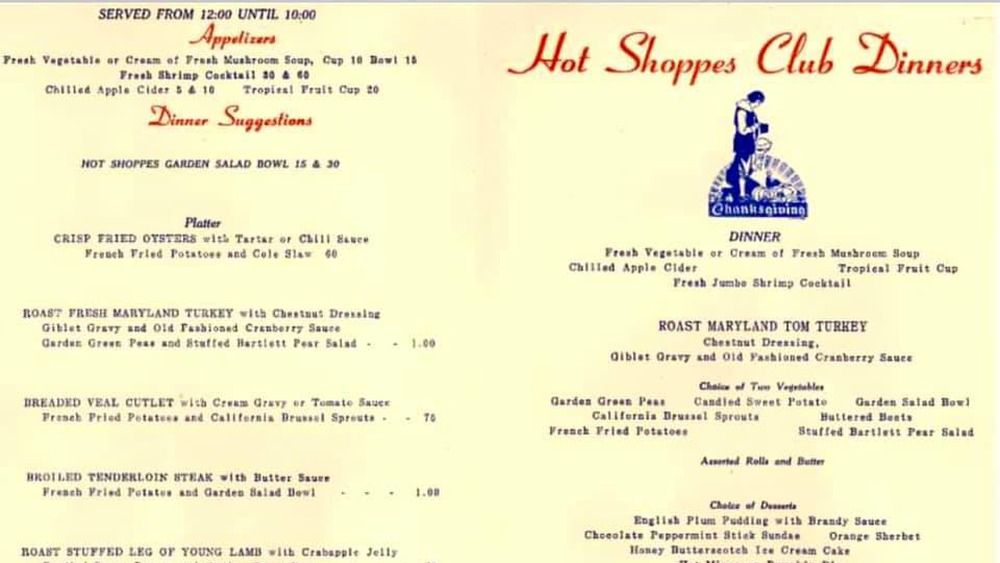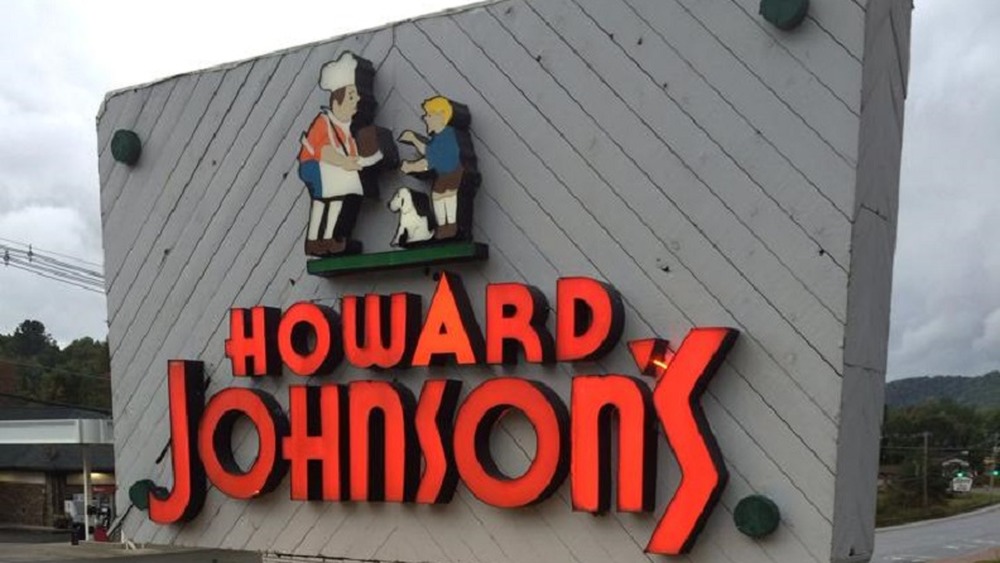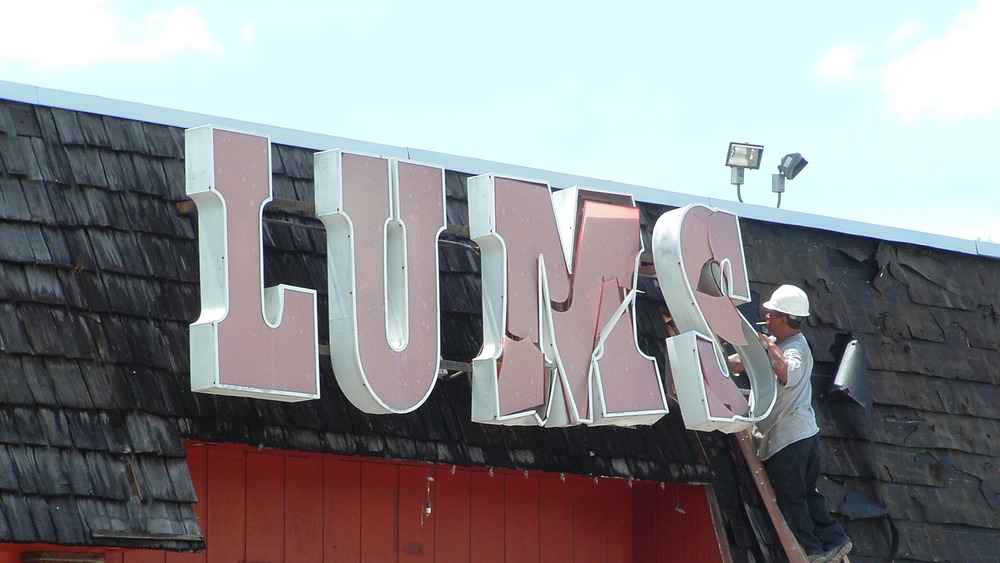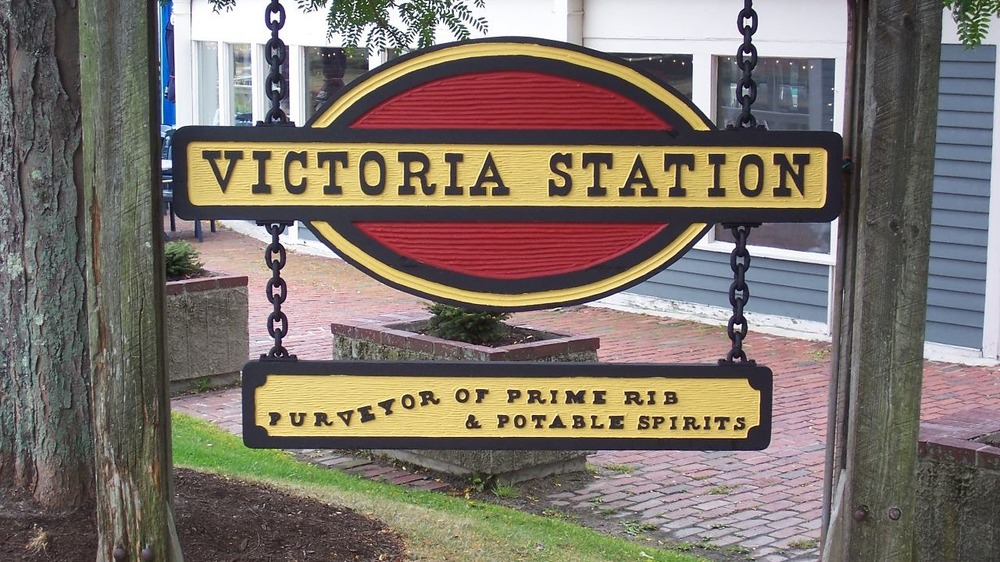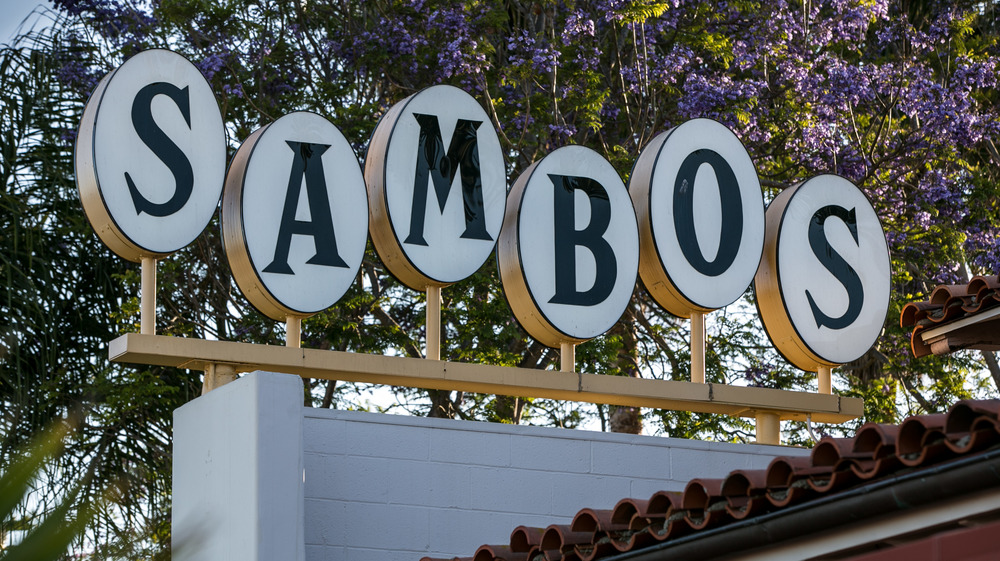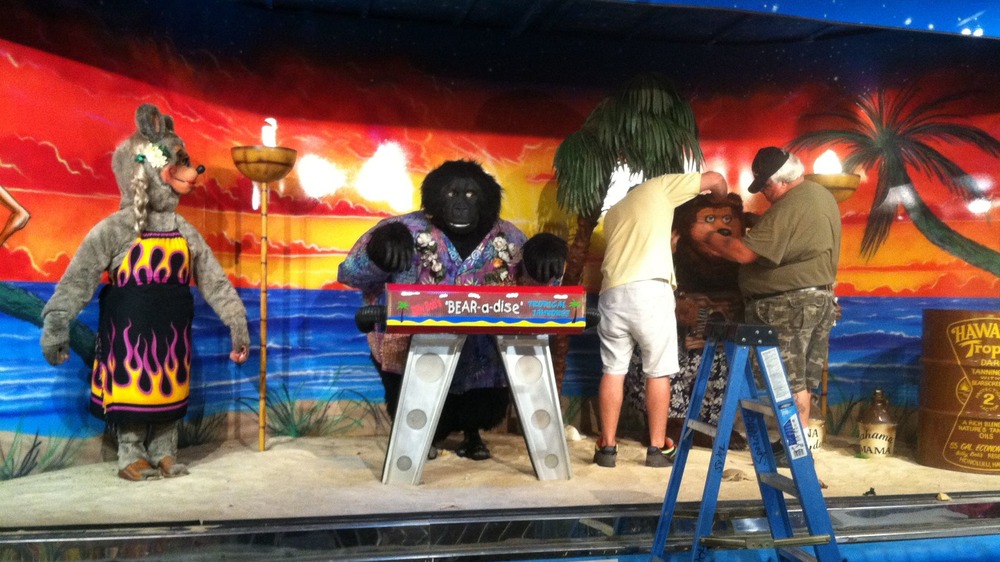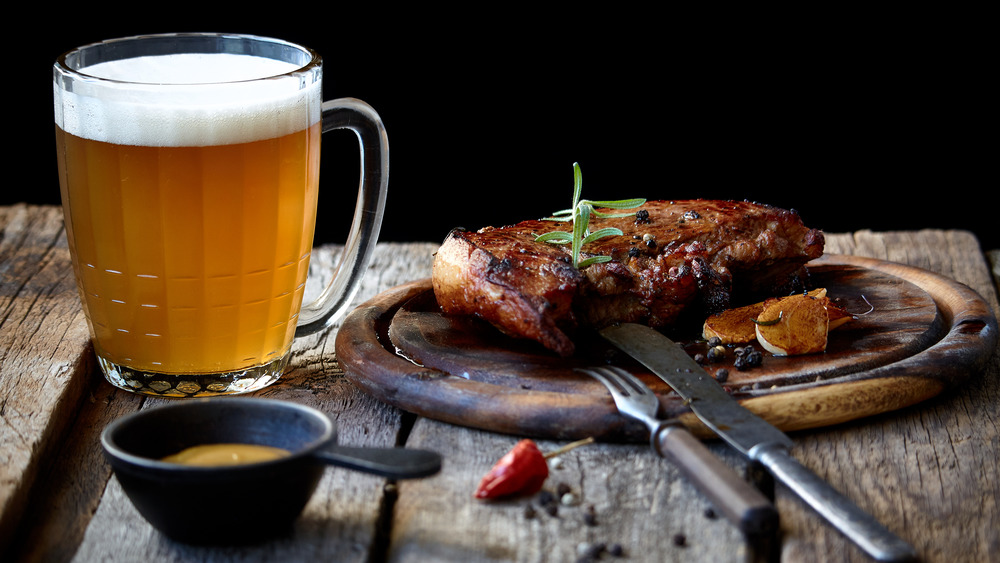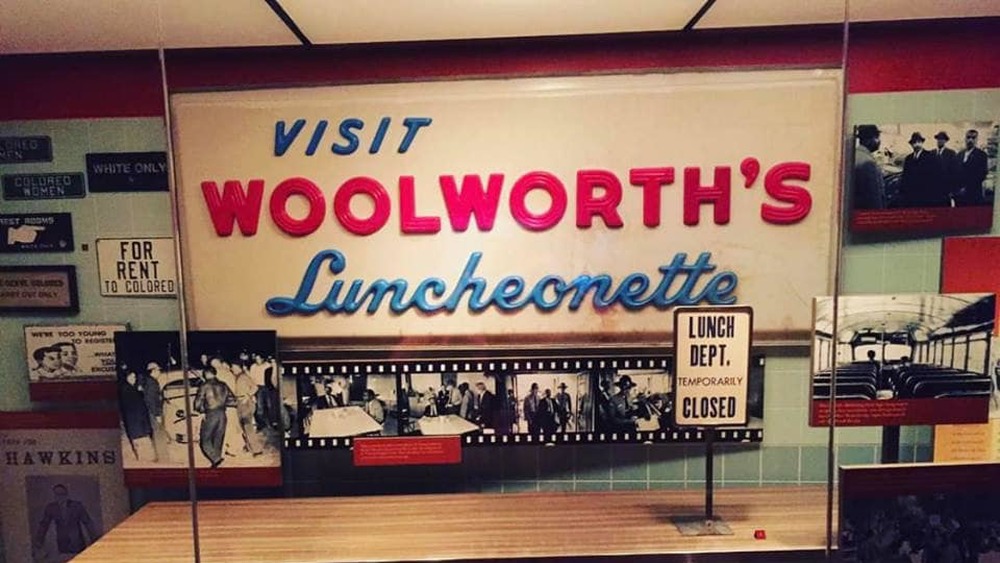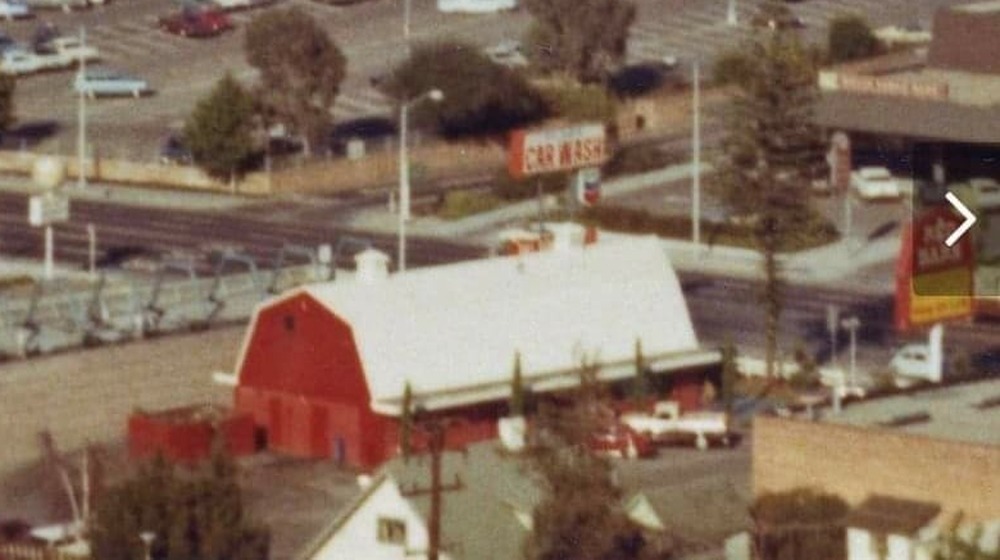The Real Reasons These Chain Restaurants Failed
America has contributed a great many things to the world. The airplane. The telephone. RuPaul's Drag Race. But perhaps our greatest contribution to the world, and, dare we say the entire galaxy, is the widespread proliferation of the chain restaurant, where people can find the exact same meal whether they're in North Dakota or New York City. And for the country that also invented the long-distance road trip, that's especially helpful when you've got a car full of kids who aren't into "sampling the local culture."
Some chain restaurants have become part of our national identity, like McDonald's or Kentucky Fried Chicken. Others, however, have somehow fallen to the wayside. From burgers to Tex-Mex to roadside coffee shops filled with fried clams, plenty of chains have closed down without much explanation. Here's a look at some of our favorites from years gone by, and why you won't find them anymore.
Beefsteak Charlies' gave away unlimited salad and beer...and somehow failed
Imagine you combined Sizzler with a bad decision spring break bar, and you've got a good approximation of the pure joy that was Beefsteak Charlie's. This casual sit-down restaurant not only offered guests an all-you-can-eat salad bar, it also boasted unlimited beer and wine and insane portions of ribs, steaks, chicken, and other meats, according to Kiplinger. Its tagline was "I'll feed you like there's no tomorrow," but it just sounds like a recipe for a bad case of indigestion. And, apparently, bankruptcy.
Somehow giving away epic amounts of meat and liquor wasn't a sustainable business model, and original founder Larry Ellman sold his 60 restaurants to Bombay Restaurants in 1987, according to The New York Times. That restaurant group wasn't able to make the place profitable, and its numbers had dwindled to only 35 when Bombay filed for bankruptcy, according to Kiplinger. By 2000, all Beefsteak Charlie's were gone, though the hangovers may still have lingered.
Arthur Treacher's Fish and Chips closed because of a cod war
That's not a typo there, and Nikita Khrushchev's first step in "burying" the United States was not forcing its most beloved fish and chips chain out of business. The spot named after the guy who played Jeeves in the Shirley Temple movies actually met its end thanks in large part to a cod war (no l) between Iceland and Great Britain, according to Kiplinger. Between the end of World War II and 1976, Great Britain and Iceland had ongoing disputes over fishing rights in the waters between their islands, according to Atlas Obscura, and the resulting "war" caused the price of Arthur Treacher's fish to double.
As a result, the chain filed for bankruptcy protection in the late 1970s, and it hasn't really been the same since. Kiplinger reported only seven Arthur Treacher's locations remaining in 2018, in New York City and northeast Ohio. Though you can still find them as stores-within-a-store at places like Nathan's Famous and Miami Subs Grill.
Walgreen's lunch counters were scrapped for Wag's Family Restaurants
Lunch counters were as much a part of the drug store landscape in the early 20th century as excessively long coupon receipts are today. And America's most ubiquitous drug store was no exception, boasting a lunch counter well into the 1970s, according to a The New York Times story. But it was not to last forever.
"(Walgreen's) eventually phased them out and opened a chain of diners called Wag's," says Sef Gonzalez — aka The Burger Beast, former proprietor of The Burger Museum in Miami, and author of All About the Burger – who spoke to Mashed. "It even used the same Walgreen's W in the logo."
The restaurant was comparable to a Denny's or Perkins, according to Moderncities.com, and flourished in the 70s and 80s. In 1988, Marriott purchased the chain and began trying to sell off the assets to no avail. The 91 Wag's locations were gone by 1991.
ChiChi's closed after a hepatitis outbreak from green onions
Not that there's ever a good time to be labeled as the source of a major hepatitis outbreak. But having it happen a year after you file for bankruptcy is a knockout punch nobody recovers from. Once upon a time, Chi-Chi's was a beloved Tex-Mex joint founded by former Green Bay Packer Max McGee, which grew to over 230 locations by 1986, according to Kiplinger. But then things went south. The chain was down to only 144 stores by 2002 and filed for bankruptcy in 2003.
But it got worse. A month after filing for bankruptcy, a batch of tainted green onions from Mexico infected nearly people who ate at a Chi-Chi's in Monaca, Penn., just outside Pittsburgh, with hepatitis A, according to an article from the Center for Infectious Disease and Policy at the University of Minnesota. The outbreak ultimately infected over 650 people and resulted in a class action lawsuit by nearly 5,000 claimants, according to Hepatitislitigation.com. Chi-Chi's settled for $800,000, the story reported, but the chain was never the same.
Burger Chef closed after the brand was sold to Hardee's
Believe it or not, Burger Chef had nearly as many restaurants as McDonald's back in the mid 1970s. According to author Hersh Shefrin, it boasted 1,200 stores to Mickey D's 1,600. Of course, those numbers are slightly different now, as McDonald's has seemingly taken over the world, and nary a Burger Chef is still in existence. It was the first place to offer the fries-and-a-drink combo, according to a story in Time Magazine. And it was even a client for the fictional Sterling Cooper & Partners in Mad Men.
All that history didn't help the Burger Chef survive, though. After amassing over 900 locations, Burger Chef was purchased by General Foods, according to a chronology in QSR. The brand became a sinkhole for money, and after losing millions, General Foods sold off many of its individual stores before ultimately dealing the whole brand to Hardee's in 1982. That chain transformed all the Burger Chefs into Hardee's, and the brand went away after that. QSR has reported Sean Sinelli purchased the rights to the brand and plans a comeback.
Hot Shoppes went away when Marriott closed them
Hot Shoppes began as a small chain of root beer stands opened by J. Willard Marriott in 1927, according to the Burger Beast. And that restaurant ultimately grew to become the massive Marriott hotel chain known today. Its menu was highlighted by the Mighty Mo — a little hamburger with a big following. The following is so big, Eater DC found a Facebook group called Friends of the Mighty Mo and Hot Shoppes, devoted completely to memories of eating the burger at the long-gone root beer stand.
The Burger Beast reported the last Hot Shoppes location closed in 1999, after Marriott slowly shut them down to focus on their worldwide hotel empire. But the menu still lives on at Anthem, the restaurant inside the Marriott Marquis in Washington, DC. Eater found not only the Mighty Mo on the menu but also the Teen Twist ham sandwich and orange freeze desserts. So if customers are willing to travel for a little bit of nostalgia, Marriott is happy to oblige.
Howard Johnson's closed when air travel got more popular
Much has been made about the return of the great American road trip in 2020, but for those of us who grew up in a world of cheap airfares and ubiquitous plane travel, the golden age of road tripping seems more of a legend than reality. Part of that golden age was Howard Johnson's, a roadside coffee shop and casual restaurant, a spot Kiplinger called "a can't miss attraction for Baby Boomer kids being carted around the country by the Greatest Generation parents."
The slice of ongoing Americana boasted trademark orange roofs and a menu long on kid's staples like hot dogs, ice cream — and fried clams. The problem was, as American menus advanced, HoJo's did not. And when air travel became the preferred mode of family transportation, the restaurant's usefulness waned. "They relied on a road travel-based crowd that changed or disappeared when airline travel became more affordable," Alex M. Susskind, professor of Food & Beverage Management at Cornell University's School of Hotel Administration, told Kiplinger. Though the hotels of the same name survive, the last Howard Johnson's restaurant closed in 2017.
LUMS closed so the owners could invest in Caesar's Palace
It doesn't get much more classically Florida than selling a chain restaurant to buy a casino. And that's exactly the tale of the once-mighty Lum's, a Florida-bred diner whose last location shut down in 2017, according to Omaha.com. It began as Lum's Hot Dog Stand in Miami Beach in 1956, run by brothers Stuart and Clifford Perlman. And before that last sad store in Bellevue, Neb., shut its doors, Lum's once numbered over 400 nationwide, serving up hot dogs to hungry patrons for over 60 years.
In 1971, the Perlman brothers sold Lum's to Kentucky Fried Chicken, just a couple of years after investing in Caesar's Palace Las Vegas. KFC introduced the Ollieburger to the menu and brought in Milton Berle as the spokesman. But the chain was sold to a Swiss holding company in 1978, who then went bankrupt in 1982. The original Lum's in Miami Beach went belly up in 1983, and today none remain.
Victoria Station ran out of money
Victoria Station was once a chain of restaurants set in railroad cars, a novel concept that captured the imagination of railroad enthusiasts. But running restaurants in idle rail cars was apparently a difficult financial proposition. Two months after the LA Times reported the Larkspur, California-based restaurant undergoing a major restructuring, it then reported Victoria Station filing for Chapter 11.
But the spirit of the rails is strong, so much so that it bonded those who worked there in a way not seen at most chains. Former Orange County Register columnist Tom Blake — who worked at Victoria Station from 1970-1978 — wrote a book about the restaurant and the people who worked there called Prime Rib and Boxcars: Whatever Happened to Victoria Station.
And there's even an entire online community called VS Reunion, where former employees can contact each other to reminisce on their days riding the rails in cars that didn't move.
The last Sambo's finally changed its name...this year
If you find it hard to believe it took the Washington Redskins and Cleveland Indians this long to finally change their nicknames, consider the case of Sambo's. The original Santa Barbara location was named after founders Sam Battistone, Sr. and Newell Bohnett, according to Eater. But the décor was done up in images from The Story of Little Black Sambo, a children's book written in 1899. To say its depictions were outdated and offensive would be an understatement.
The restaurants were so offensive, in fact, that despite having over 1,100 locations in 47 states, Sambo's was the target of protests throughout the 1970s, according to an examination of the restaurant by KCET. Lawsuits followed, and though initially the owners were hesitant to change the name, by the late 1970s several Sambo's in the northeast and Midwest were rebranded as "Jolly Tiger" and "No Place Like Sam's." Still, the ill will festered, and in 1981 the company lost $50 million and shut down 450 Sambo's restaurants. All but the original location in Santa Barbara were gone by 1984. And in the wake of this summer's Black Lives Matter protests, it too agreed to change its name. It now goes by Chad's (via KEYT).
ShowBiz Pizza copied, bought, then became Chuck E. Cheese
Pretty much anyone who attended a child's birthday party in the last 40 years has been to one that included singing animatronic puppets and carboard crust pizza. And while you may remember it being at Chuck E. Cheese, there's a pretty decent chance it could have been at its knockoff ShowBiz Pizza. According to a lengthy narrative from the Burger Beast, former Chuck E. Cheese franchisee Robert Brock left his franchise in 1979 to start a competing spot with the people who invented the Whack-a-mole game.
The place was a hit, bolstered by its Rock-afire Explosion band, but litigation dogged ShowBiz pizza from day one. ShowBiz settled and agreed to pay Chuck E. Cheese part of its profits. Then, as the arcade business suffered in the late 1980s, ShowBiz ultimately bought Chuck E. Cheese and operated it separately. To save money on marketing, ShowBiz ultimately turned all its locations into Chuck E. Cheese restaurants, which they remain to this day.
Steak and Ale suddenly closed after corporate restructuring
If you've ever showed up to your favorite restaurant and suddenly seen a "For Rent" sign in the window, you know the pain of Steak and Ale regulars in July of 2008. That month, Steak and Ale, along with Bennigan's, shut all their locations when parent company S&A Restaurant Group filed for Chapter 7 bankruptcy. According to the Dallas Morning News, it shuttered all 58 locations with almost no warning, leaving food to rot in refrigerators and employees suddenly out of a job.
Bennigan's has rebounded slightly, but rumors of a Steak and Ale comeback have been largely overstated. The Morning News reported in 2016 that a group in Mexico had agreed to bring multiple Steak and Ale's to that country in 2017. But as of December 2019, Fox5 New York reported the status of that deal was still unknown. But Legendary Restaurants, who still owns the rights to the brand, was apparently looking for any eager franchisees.
Woolworth's lunch counter faded out with the store
The most famous lunch counters in America were undoubtedly at Woolworth's, not so much because of the soda fountains and greasy burgers they served, but because of the sit-ins and civil rights protests they inspired in the 1960s. In fact, the Greensboro, N.C., Woolworth's lunch counter — home of the original sit-in in 1960 — still stands in the original building, which is now the International Civil Rights Center and Museum.
But the one-time king of the discount stores was brought down as much by competition as bad press. The same decade that saw the sit-ins also saw the birth of Kmart, Target, and Walmart, and according to MeTV, was the beginning of Woolworth's end. It closed 900 stores in the early 1990s, and only one remains, in Bakersfield, Calif. Interestingly, in 1974 Woolworth established an athletic shoe store as a spinoff of its Kinney Shoe Corporation and called it Foot Locker. It's outlasted both its parent companies, and according to MeTV now has over 3,000 locations worldwide.
Red Barn had the first salad bar in a fast food restaurant but was still overwhelmed by McDonald's
Golden arches look cool and all, but how about a chain of restaurants recognizable by their giant red barns. This was the look that made Red Barn famous, a chain of burger restaurants that began in Ohio in 1961 and lasted until about the mid-1980s, according to the Rochester Democrat & Chronicle. Though its signature burgers like the Barn Buster and the Big Barney have long since been forgotten, it did leave the fast food world one lasting legacy — the salad bar.
The Democrat & Chronicle cited a Red Barn-dedicated website that claimed Red Barn was the first fast food restaurant to offer a self-service salad bar. But it was not enough to keep a burger restaurant going. The chain was sold to Philip Khan in 1983, when half of its 100 remaining restaurants were already closed. By 1986, only 22 restaurants remained in New York, Ohio, and Washington, D.C. Though some of the signature red barns still remain standing, none house the one-time burger giant.
